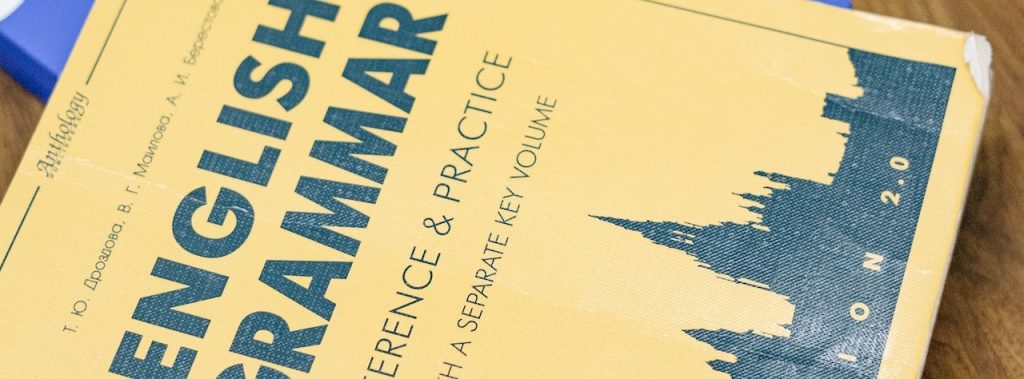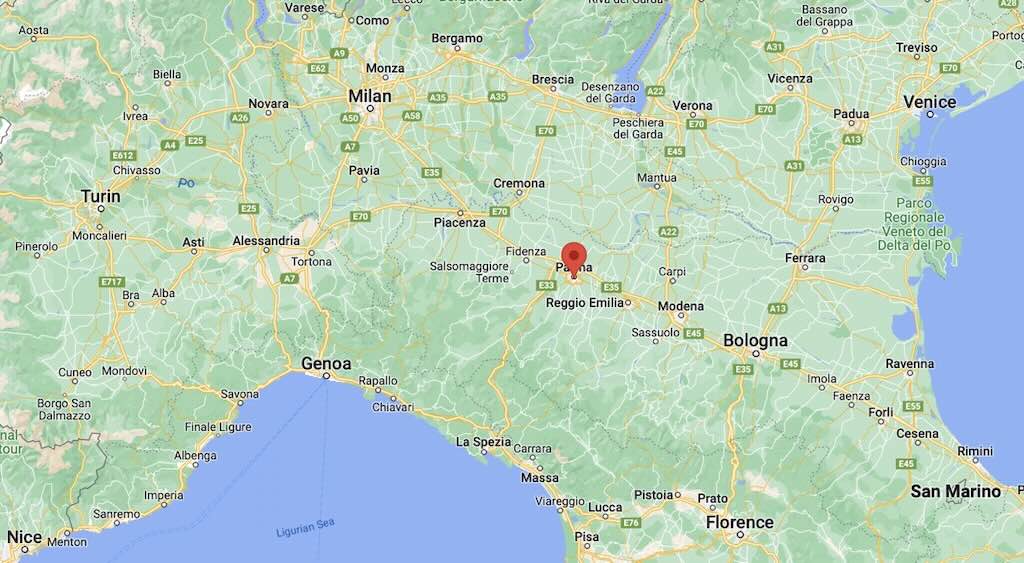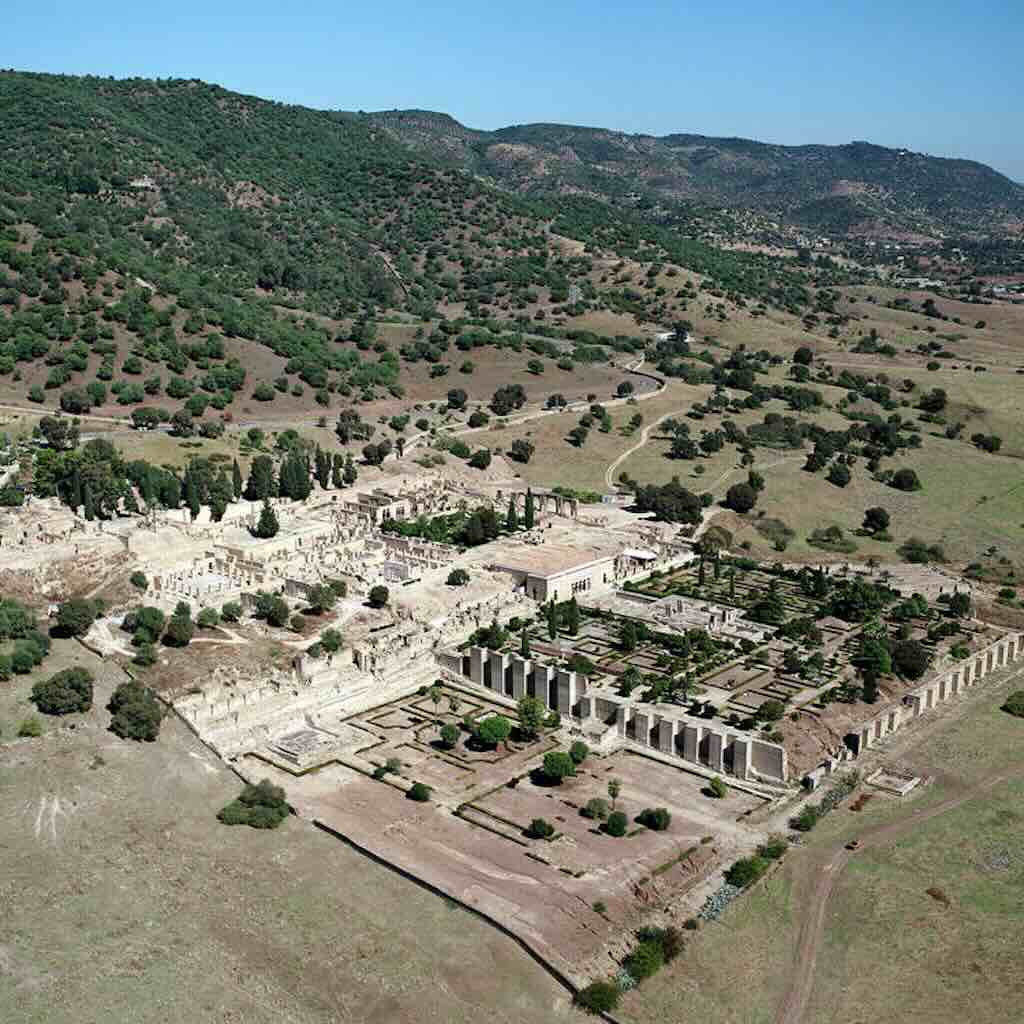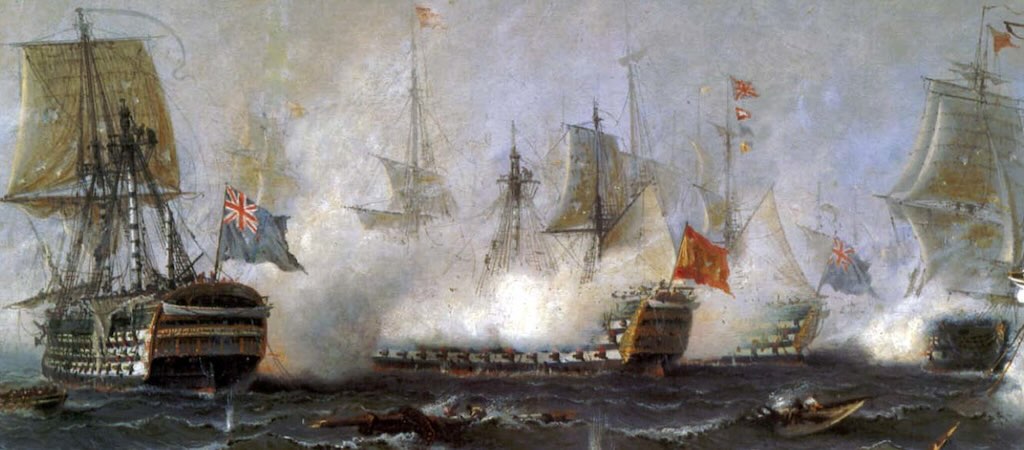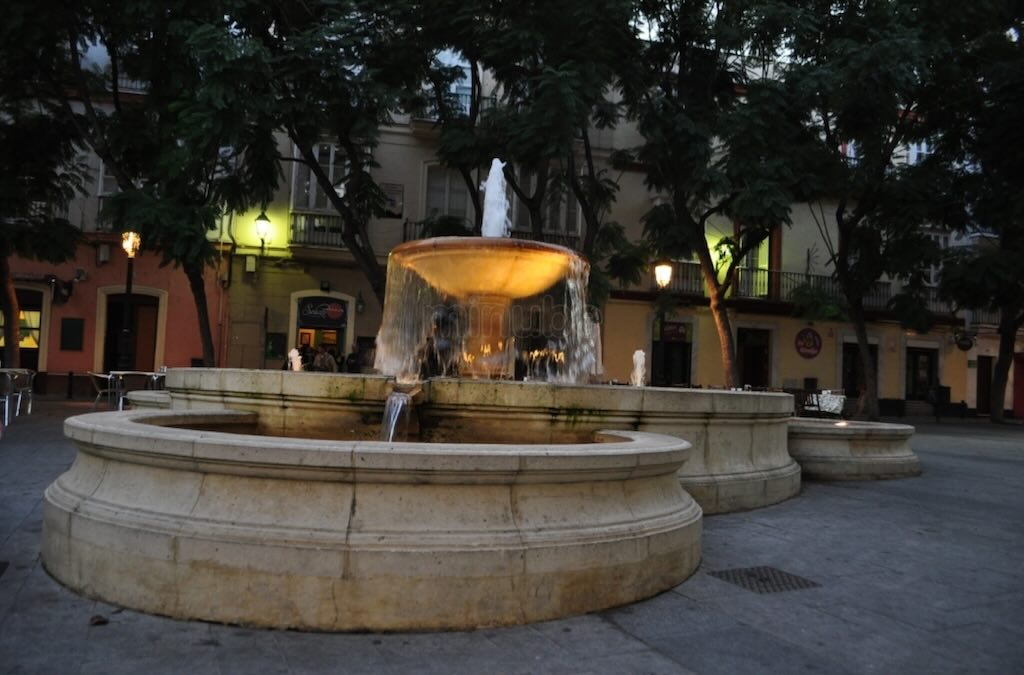In this post I will rapidly look at the English alphabet and vocabulary, before moving to abbreviations and synonyms.
A taster – Why do we “type” on a computer keyboard? It comes from the old world of printing presses, where “type” meant ‘symbol’ or ‘emblem’. And because some symbols would often occur together they made preset pairings on metal plates called “stereotypes”. We also have the “upper- and lower-case” which got their names from the fact that the more frequently used letters were kept in the lower-draw, the less frequently used in the upper-draw.
What is language?
Let’s start this post on the English language, by asking what is language and why did mankind invent it?
Don’t worry, this will only take a minute and will be relatively painless.
For once Wikipedia is brief and straight to the point, “A language is a structured system of communication used by humans. Languages can be based on speech and gesture, sign, or writing. The structure of language is its grammar and the free components are its vocabulary“.
According to the Wikipedia article on the origin of language, things get a little bit more complicated, because no one really knows. Did it slowly evolve or appear relatively suddenly? Is it largely genetically encoded or is it mostly learned through social interaction at an early age? It is quite possible that we will never truly know the origin of one of the defining features of our existence.
The key to any language is clarity
William Butler Yeats (1865-1939) once wrote “Think like a wise man but communicate in the language of the people“.
And Richard Feynman (1918-1988) added “The real problem in speech is not precise language. The problem is clear language. The desire is to have the idea clearly communicated to the other person“.
Clear and straightforward English is often called Plain English.
A good starting point is to have a clear idea why a text was written, and the author must first and foremost transmit that fact.
A good text avoids all forms of unnecessary ornate or florid writing. Dr. Johnson (1709-1784) insisted that a writer should always remove any phrase they find beautiful or elegant.
George Orwell (1903-1950) argued for honest clarity and straightforward expression, and advised:-
- Never use a metaphor, simile, or other figure of speech which you are used to seeing in print.
- Never use a long word where a short one will do.
- If it is possible to cut a word out, always cut it out.
- Never use the passive where you can use the active.
- Never use a foreign phrase, a scientific word, or a jargon word if you can think of an everyday English equivalent.
- Only break these rules when you know you are breaking them.
To which others have added:-
- Use familiar words.
- Prefer concrete words to abstract words.
- Complex or unfamiliar concepts should be explained as simply as possible.
- If a single word will do, don’t ‘decorate’ it.
Some texts are designed to convince, and they must:
- Captivate the reader (tell a story), but still focus on what they need to understand.
- Stress key elements with subtle repetition.
- Make connections with what the reader knows.
Here are some words that appear far too frequently and sometimes out of context – actually, affirms, argues, basically, clearly, currently, dictates, expounds, inevitably, in order, just, literally, maybe, now, obviously, perhaps, pretty, probably, proclaims, real, really, simple, states, that, very, …
And perhaps the most important single piece of advice came from Robert Benchley (1889-1945), who one wrote “Drawing on my fine command of the English language, I said nothing“.
Can you answer these questions?
We will first warm-up by looking at a few typical English language related quiz questions. And we will end this post with a few more quiz questions. I’ve not just included the answers, but I’ve tried to add a little context to explain what the answer means.
Quiz questions often concern the meaning of common and less common English words, expressions and sayings. Here are a few examples:-
What is the name for medicinal mud? Answer – For at least 4,500 years different types of clays have been used for mud therapy. The technical name for the mud or clay that is used for therapeutic purposes is Peloid, but the Italian word fango would also be accepted.
What is a motorcycle with four wheels? Answer – Technically they are ‘all-terrain vehicles’ (ATV) but they are often today known as quads. The earliest ATV was made by Royal Enfield and dated from 1893. From the 1960’s to the 1980’s three-wheeled ‘All Terrain Cycles’ ATC’s were very popular, but they were voluntarily discontinued by all manufactures in 1987 for safety concerns. Since then four-wheel ATV’s have become popular again, although in some countries they are still not considered street-legal.
What does the abbreviation SMS mean? Answer – The abbreviation means ‘Short Message Service’, although technically the name S-M-S would be considered an initialism, or a type of abbreviation pronounced one letter at a time. Today the SMS is just one example of text messaging, or texting. The first SMS was sent on the 3 December 1992, and was the message ‘Merry Christmas’ sent from Neil Papworth to Vodafone director Richard Jarvis, who received it on his Orbital cordless telephone. On December 21, 2021, the message was sold as a non-fungible token (NFT), a type of digital asset, for $120,000 (the money went to the United Nations Refugee Agency). The buyer, who asked to remain anonymous, received a replica of the protocol that transmitted the SMS. The selling of intangible goods is not legal in France, so the French auction house packaged the text message in a digital frame, displaying the code and communication protocol.
What does ‘glasnost‘ mean in Russian politics? Answer – Glasnost has been used in Russia to mean ‘openness and transparency’ since the late 18th century. In 1986 Mikhail Gorbachev (Russian, 1931-2022) and his advisers adopted ‘glasnost‘ as a political slogan, together with the obscure term ‘perestroika‘ literally meaning ‘restructuring’.
What does the Latin proverb ‘Errare Humanum est‘ mean? Answer – “To err is human“, however the full proverb is ‘Errare Humanum est, perseverare diabolicum’ or “To err is human, to persevere [in the error] is diabolical“. Today the true lesson is that it would be a moral fault not to learn from one’s mistakes.
What is the singular of scampi? Answer – ‘Scampi‘ is an Italian word, so the singular is ‘scampo‘. I’ve never heard anyone say “I’ll have a scampo”, but ‘scampo’ can also mean escape or way out (as in “Non c’è scampo” or There’s no way out).
‘Cerveza‘ means beer in which country? Answer – Spain, however I prefer to use the term ‘caña’ for a small glass of beer.
In Cockney what is a “baker’s dozen“? Answer – the question involved rhyming slang, and a “baker’s dozen” is a cousin.
Of course traditionally a “baker’s dozen” is not a dozen (12) but 13. There are a few theories as to why a baker’s dozen became 13, but the most widely accepted one has to do with avoiding a beating. In medieval England there were laws that related the price of bread to the price of the wheat used to make it. Bakers who were found to be “cheating” their customers by overpricing undersized loaves were subject to strict punishment, including fines or flogging. Even with careful planning it is difficult to ensure that all of your baked goods come out the same size. There may be fluctuations in rising and baking and air content, and many of these bakers didn’t even have scales to weigh their dough. For fear of accidentally coming up short, they would throw in a bit extra to ensure that they wouldn’t end up with a surprise flogging later.
Where did the word ‘denim‘ come from? Answer – The word derives from “sergé de Nîmes” where ‘sergé‘ is a type of twill fabric, or more specifically a particular type of weave. And ‘denim‘ is a particular cotton weave believed to come from Nîmes.
What exact does CD-ROM stand for? Answer – The abbreviation means ‘Compact Disc – Read Only Memory’ and its actually a mix of an initialisms (with the C-D) and an acronym (with the ROM pronounced as one word).
The compact disc (CD) was released by Philips and Sony in 1982, and it ‘fused’ Sony’s error correction technology with Philips’ optical technology. It was first sold to store and play music (CD-DA), and in 1984-85 to store data (CD-ROM). A standard file interchange format for the CD-ROM appeared in 1988, and (finally) CD-ROM data disk players were shipped for personal computer add-ons in 1990. Sony and Philips ran a patent pool for CD-ROM type technologies. In 1993 Toshiba, Panasonic and others, looked for a format to use for video data, and Sony and Philips did likewise. A technology compromise was brokered by IBM and a common specification for DVD-ROM style discs appeared in 1996, but the different companies did not agree on recordable and rewritable formats. It was only in 2003, with DVD players costing under $50, that the technology really took-off. Check out this article for a great introduction to CD-ROM and DVD technologies.
What is the name of the little covering at the end of a shoelace? Answer – The Wikipedia article on the aglet is well worth a read, if only to learn that ‘aiguillettes‘ is a more generic name for cords with decorative metal tips or lace tags. It also opens up the intriguing topic of shoe terminology and styles.
What is the name of the little dot on ‘i’ and ‘j’? Answer – A tittle.
Some texts include the crossbar on the ‘t’ as a tittle, but this may be just because originally people said “to a tittle“, which later became “to a T“, meaning exactly or perfectly. In past times when writing in a cursive hand it was common to make a second pass “adding the jots and tittles“. This later became the expression “to dot the i’s and cross the t’s”, meaning to be meticulous or thorough. Some texts suggest that jot was for the crossbar on a ‘t’, however in the world of typefaces and type-setting it’s called a crossbar, and on ‘i’ and ‘j’ the dot is called either a jot or tittle. More generally ‘jot or tittle‘ once meant a very small amount or portion, as in “I don’t want just a jot or tittle, I want the whole lot”. In this sense ‘jot‘ is the anglicised version of the Greek ‘𝜄’ or ‘iota‘, which is the smallest letter or stroke of any writing system. Still today we say “jot it down“, meaning to quickly make a short note of something.
For completeness we also say “mind your p’s and q’s” meaning to mind your manners or be on your best behaviour. However, nobody is really sure about the exact origin of this expression.
Wikipedia rightly points out that in some languages i and ı are two different units of sound. Also in Latin-based languages the i drops its tittle in favour of acute or grave accents, í or ì. And in some past and present languages you can also find ī, î, ï, į, as well as a i with a tittle both above and under it, and there even exists an i with tittle and an acute accent sitting above it.
In English what is the meaning of the prefix ‘auto-‘? Answer – Self or Oneself, as in autograph, but you find the same prefix in automatic, automobile and in auto-determination (self-determination).
If something is described as ‘noisome‘, what characteristic does it have? Answer – Noxious or foul-smelling.
What has the meaning “an alloy or union of mercury with another metal”? Answer – Amalgam, the most obvious one is that once used by dentists to fill cavities. I think they now use some form of composite resin filling, or materials like ceramic, glass ionomer, or gold.
What is the meaning of the Latin word ‘corpus‘? Answer – Literally translated it means ‘a body’, with the plural corpora. You can find Corpus Christi (the ‘body of Christ’), and from 1727 in English ‘corpus‘ became also “a body of facts or things” or “the complete writings of an author“.
The word ‘hotel‘ originated in what language? Answer – It was borrowed from the French ‘hôtel’ (hostel), but the word probably comes from the Latin ‘hospes‘ meaning guest (and which also gave its name to hospital).
In English what does the Latin phrase ‘caveat emptor‘ mean? Answer – “Buyer beware” is a well know English proverb. It is often seen as a disclaimer, suggesting that items are sold ‘as is’. However if the seller actively conceals defects, etc., or intentionally misleads the buyer, then it would be fraud.
Where does the word ‘April‘ come from? Answer – the Latin name is Aprilis which derives from ‘to open’ signifying the opening of buds in spring.
Which two letters don’t appear in the Periodic Table? Answer J and Q, but it must be said that in some languages iodine is called jod.
In Morse Code how is the letter S represented? Answer – dot-dot-dot, which is easy to remember because SOS is dot-dot-dot dash-dash-dash dot-dot-dot.
There is quite a body of trivia about the Morse Code:-
What is the shortest Morse Code letter? Answer – Morse Code is not case sensitive, and E/e is just one dot, and the shortness of the letter signals is based on how common the letter occurs in English (e.g. one dot for E/e and four dots and dashes for the infrequently used C, Q and Y).
What is the longest Morse Code letter? Answer – Firstly, the duration of a dash is three times the duration of a dot. And the longest letter is in fact the number 0 which is dash-dash-dash-dash-dash.
Different languages had different Morse Code alphabets, but they all have the same code for which letters? Answer – in all the different alphabets, S and O are same (because of the standard SOS).
Samuel F.B. Morse (American, 1791-1872) was one of the inventors of the Morse Code around 1837, but when did it become an international standard? Answer – The International Morse Code was standardised in 1865. However it was not based upon Morse’s original coding, but rather on a ‘continental code’ developed by Friedrich Clemens Gerke (German, 1801-1888) in 1848.
During WW II the BBC opened with a few bars from Beethoven’s Fifth Symphony, but what did those bars mean in Morse Code? Answer – They were di-di-di-dah which is the same as dot-dot-dot-dash or the letter ‘V’ for victory.
In what year was the last commercial Morse Code transmission made in the US, and what was the message? Answer – In the United States the final commercial Morse Code transmission was on July 12, 1999, signing off with Samuel Morse’s original 1844 message, “What hath God wrought“, and the prosign “SK” (“end of contact”).
Can you blink in Morse Code? Answer – Yes, there was one famous case where a US soldier was captured in Vietnam and put on television as propaganda. Though he was not allowed to say anything, he blinked his eyes in Morse Code to spell the word TORTURE, thus informing the world that he was being treated contrary to international law.
Is Morse Code really a code? Answer – Yes and No, it is an alternative alphabet, and a code is often defined as a system of rules to convert information into another form, sometimes shortened or secret. So Morse Code is a way to shorten a message, but not to render it secret. But above all it was retained as a way to communicate using very little bandwidth.
Is Morse Code still used? Answer – It is still used by some radio ‘hams’, and VOR stations still use three-letter identifiers transmitted in Morse Code, as do NDBs. In addition there was one comment that some HSM’s indicate transmission errors as SOS followed by a three letter code. There was a suggestion that some military personnel are still trained in Morse Code because it might be the only means of long distance communication available in a nuclear war. Finally, it can be used by people with severe disabilities, via blinking or tapping.
All about alphabets and vocabulary
The above quiz questions were mostly about words that appear in the English vocabulary. What does this word mean? What corresponds to this definition? As Wikipedia puts it, the vocabulary is the stock of familiar words used in a language. But language has a far more complex definition, because it is a structured system of communication. So it’s about how words drawn from a vocabulary are organised together to convey a meaning.
Let’s work from the simplest concepts to the more complex ones.
Alphabets
Alphabets are the basic sets of symbols (letters) used in different written languages. Wikipedia lists writing systems, and you quickly learn that not everyone uses the Latin script. Wikipedia also lists languages by writing systems, creators of writing systems, and the first written accounts in different writing systems.
We can learn a lot from the answers to quiz questions:-
What is the origin of the word alphabet? Answer – The original Greek word was built from alpha and beta.
Which was the last letter to be added to the modern English 26-letter alphabet? Answer – According to most experts J arrived last, ca. 1524.
We know ‘e’ is the most frequently occurring letter in English, but what is the least frequently occurring letter? Answer – According to Wikipedia, ‘z’ is the least frequently occurring letter in the English language, followed by q, x, and j.
We know that English has a 26-letter alphabet, but how many letters are there in the alphabet’s of Spain, Italy, France and Germany? Answer – The Spanish have a 27-letter alphabet, because ñ is considered a separate letter (but á, é, … are not). In fact Italy only has 21 letters in the native Italian alphabet (j, k, w, x and y are not part of the original Italian alphabet, and appear only in loanwords). The French, despite having é, à, ô …, still have only a 26-letter alphabet. In fact they have five diacritics (which are glyphs added to existing letters) and two orthographic ligatures (or writing conventions where two existing letters are joined to form a single glyph, not another letter). This is also true for German, because letter-diacritic combinations (Ä/ä, Ö/ö, Ü/ü) using the umlaut and one ligature ẞ/ß (called eszett (sz) or scharfes S, sharp s), do not constitute distinct letters in the alphabet. Before the introduction of the printing press, frontalisation was indicated by placing an e after the back vowel to be modified, and the umlaut was developed by German printers as a space-saving typographical convention. Although the two dots look like those in the diaeresis (trema) diacritical marking, a distinction should be made between umlaut and diaresis because the two have different functions. The eszett or scharfes S (ß) represents the unvoiced s sound.
The NATO phonetic alphabet consists of 26-word codes, but what are the codes for the vowels? Answer – alfa (A), echo (E), india (I), oscar (O) and uniform (U).
Two letters in the NATO phonetic alphabet appear to be misspelt, which are they? Answer – Alfa (A) and Juliett (J).
American soldiers referred to the Viet Cong, and more generally the North Vietnamese, as ‘Charlie’, why? Answer – In the NATO phonetic alphabet Viet Cong was shorted to V-C or “Victor Charlie”.
What are the origins of each letter in the English alphabet? Answer – this is more than just a question, but Wikipedia has a webpage on the English alphabet, which points to each letter in turn, and it’s history.
In “I bought a beautiful dress in that shop”, what part of speech is the word ‘beautiful’? Answer – Adjective.
In “Well, I don’t think I’ll be home before six”, what part of speech is the word ‘Well’? Answer – Interjection.
The major word classes or parts-of-speech in English, include verbs, nouns, adjectives, adverbs, determiners (including articles), prepositions (and postpositions), and conjunctions, to which we can add interjections, clauses, sentences and even numerals.
Vocabulary
Vocabulary is all about the stock of words that can be use in a language, e.g. in English. It is said that the average Englishman understands about 40,000 words, but uses only about 20,000. In fact a fluent speaker in English probably only needs about 10,000 words.
But hidden in those 40,000 words are a multitude of unusual words including loanwords, blend words, calques, portmanteaus, the odd retronyms, the very occasional apocopation and a few buzzword, and there are words that mean different things in American and English.
There are also ordinary words which are given different, special meanings in the form of jargon, slang, and cant.
Jargon is about terminology associated with a special field or area of activity. As an example, the word ‘acute’ has a specific meaning in a medical context. Words or expressions such as ‘due diligence’, ‘suspect’, ‘bipartisan’, or ‘best practice’ have specific meanings in specific contexts.
Slang is a vocabulary that in many ways is part of the identity of a group, so words that show inclusion in a certain social group. As an example, ‘busted’ certainly means something that is broken, but more recently it meant being arrested by the police, and now means something that is ugly. So ‘busted’ is a slang word because it has a different meaning to a specific group, in this case different meanings to different groups. Another example is ‘ride’ which might mean a trip in a car, but today can refer to a pair of sneakers.
Cant is a kind of jargon that is used as a ‘secret language’ designed to exclude or mislead people who are outside the group. The word ‘cant’ has several meanings, but here we are referring to what some people now call a cryptolect, and others have even called an anti-language. Some well known examples include ‘jailbird’ (prisoner), ‘game’ (robbery), and ‘pig’ (police), but also ‘lift’ (steal) and ‘sham’ (a trick).
And we can’t forget that the English Language also includes a multitude of Latin and Greek prefixes, suffixes and phrases.
Having skimmed over alphabets and vocabulary we now can start to look at what we can do with words, i.e. abbreviate them, create acronyms, contract them, blend them, find synonyms, etc.
Abbreviations, Acronyms, …
Abbreviations are all about shortening words or phrases by any method possible, including:-
-
Just shortening the written word, e.g. abbr. for abbreviation.
-
Acronyms are shortened words made up of the individual initial letters of a longer name or phrase, e.g. radar, NATO, etc.
-
Initialisms are shortened words where the letters must be pronounced separately (an acronym is pronounced as if it is a new word), e.g. Uniform Resource Locator is pronounced as U-R-L.
Contractions are a different type of abbreviation where certain internal letters and sounds are left out. The key here is that a single concept presented as a sequence of words is contracted, e.g. “do not” becomes don’t, or “let us” becomes let’s. In reality this type of contraction is called an elision, a contraction by dropping one or more sounds.
Clipping is a way to reduce a word to one of its parts. For many experts the resultant word starts as slang (informal language of a group), but can become part of standard English when widely used. The initial part of the word can be clipped (aphaeresis), or the ending can be clipped (apocope), or the middle can be clipped (syncope). Bot for ‘robot‘ and net for ‘Internet‘ are examples of aphaeresis. Doc for ‘doctor’, exam for ‘examination’, and pub for ‘public house’ are all examples of an apocope. You can also clip both ends, e.g. fridge from ‘refrigerator‘ and flu from ‘influenza‘. Examples of a syncope are rarer, but maths comes from ‘mathematics‘, and specs from ‘spectacles‘. Finally there is compound clipping, which produces sitcom, sci-fi, pro-am, photo op, etc.
Blend words are formed from two words, where one or both could easily be meaningless fragments. Examples are brunch (from breakfast + lunch), telex (from teleprinter + exchange), chortle (from chuckle + snort), dumbfound (from dumb + confound), …
Portmanteau words were first used by Lewis Carroll (English, 1832-1898) in “Through the Looking-Glass“. Humpty Dumpty explained to Alice, “like a portmanteau – there are two meanings packing up into one word“. The idea is that you wish to say slimy or lithe, but can’t make up your mind, so you invent ‘slithy‘. In this sense portmanteau words are blended based upon the sounds of the original words, and the new word. Other examples are smog (from smoke + fog) and motel (from motor + hotel), although both could also be considered as blend words. It’s worth mentioning that today ‘port-manteau‘ is French for coat rack or coat hanger, but in the 19th century it was actually a type of suitcase that opened into two equal sections (like a large version of a Gladstone bag).
Wikipedia tells us that portmanteau words are not contractions, because that would mean the word was made from words that would otherwise appear together in sequence. Nor are portmanteau words truncations of the stems of blend words. Nor is a portmanteau word a compounding of two words (like starfish from star + fish).
Now have a look at these quiz questions:-
What is an acronym? Answer – A word formed by the initial letters of a name or description, e.g. radar, NATO, … (but a word of warning, abbreviations like SMS are not acronyms but an initialisms).
What are the usual abbreviations for road, street, avenue, and boulevard? Answer – Abbreviations are just shortened versions of the words, so it’s Rd., St., Ave., and Bld. or Blvd.
What do the letters in the acronym ‘scuba’ represent? Answer – Self-Contained Underwater Breathing Apparatus.
What’s the difference between an acronym and initialism? Answer – You use the acronym BASIC as a new word, whereas NBA (for National Basketball Association) is an example of initialism because it is not pronounced as a word, but as a series of letters N-B-A.
‘Bit’ is a blend word from which two words? Answer – binary + unit.
‘Slithy’ and ‘mimsy’ were made-up by Lewis Carroll in “Through the Looking-Glass“, but what do these words means, from where were they derived, and what is the name for these types of words? Answer – ‘Slithy‘ means both slimy and lithe, and ‘mimsy’ means both miserable and flimsy. This type of blending based upon the sounds of the original words, and the new word, creates what are called portmanteau words.
NASDAQ is an acronym and represents ‘National Association of Securities Dealers – -‘, what are the last two words? Answer – Automated Quotation(s).
Synonyms and Homonyms
Synonyms are words or phrases that mean nearly the same (or exactly the same) as another word or phrase. Antonyms which are ‘pairs’ of words that are inherently the opposite, e.g. long and short. So antonyms are set against synonyms.
Homonyms are either homographs (words that are spelt the same, regardless of pronunciation) or homophones (words that are pronounced the same, regardless of spelling), or both. Both means words that are spelt the same and pronounced the same, but have different meanings, e.g. bat as a flying mammal and a piece of sports equipment, and we have the bank of a river and a bank as a place to deposit money.
Hyponymy and Hypernymy is just about how some words relate to others, e.g. how crow and eagle are all hyponyms of ‘birds‘, which is in turn a hyponym of ‘animal‘. A hyponym is a word that refers to a more specific concept within a broader category, so it’s a “subtype” of another word. A hypernym is a word that refers to a broader category or class that encompasses more specific terms, so it’s the “supertype” of another word.
Holonymy and Meronymy is all about how words (terms) are denoted as whole or as parts of a whole. So the ‘whole’ is called a holonym of its parts, and a part is called a meronym of a ‘whole’. The study of the relationship between parts and the whole they form is called mereology. As an example, ‘bar’, ‘trunk’, and ‘limb’ are meronymies of the holonym ‘tree’.
Metonymy and Synecdoche are two additional concepts. Firstly metonymy is about the way a concept or thing can be referred to by the name of something that is closely associated with it. Single words can have multiple, but related, meanings (polysemy), and therefore both metonymy and metaphor involve the substitution of one word (term) for another. A metaphoric substitution is based upon an analogy between two things, whereas a metonymic substitution is based on some physical/logical relationship. Synecdoche is a specific kind of metonymy, where the two things mentioned are part of each other.
As an example, the wheels are one part of a car. But when people refer to their car as ‘wheels’ it’s a synecdoche. But if they refer to the car as a ‘ride’ it’s a metonym because it is a logically related word in that it can be used to replace the word ‘car’ entirely. In this context the use of terminology related to ‘car’ is often used as an analogy, e.g. you drive a car, and you drive forward a business, money available in a business can be related to fuel for the car, etc.
As a special case of metonymy we have “Totum pro parte” and “Pars pro toto“. “Totum pro parte” is Latin for the “the whole for a part”, and is a kind of metonym, in that something is named after one of its parts (or just one characteristic of a whole). The most common example is calling the United States just America, which is in fact much bigger, and where we call people from the United States Americans whereas that would normally have represented anyone from the New World.
Whereas “Pars pro toto” is the opposite. It is Latin for “a part (taken) for the whole”, i.e. a part or portion of an object, place, or concept is used to represent its entirety. The most common example is ‘glasses’ which whilst containing two pieces of glass, also include a frame, nose bridge, etc. Another example is calling the entire United Kingdom just England.
Have a look at these questions:-
What is a metonymy? Answer – A thing or concept is referred to by the name of something closely associated with that thing or concept, e.g. ‘Number 10’ means 10 Downing Street, ‘lead‘ means bullets, etc.
What is an eponym? Answer – A person, place, or thing after whom someone or something is named, e.g. Elizabethan era was named after Elizabeth I, Achilles’ Heel is named after Achilles, etc.
What is a paronym? Answer – Words written or pronounced in a similar way but have different meanings, e.g. excise and exercise, affect and effect, upmost and utmost.
Now can you answer these questions?
What punctuation mark ends an imperative sentence? Answer – The imperative sentence is a grammatical mood that suggests a command or request, and thus best goes with a ‘full stop‘ or ‘exclamation mark‘. Examples would be Stop. Give Way. Do Not Enter. or “Put the gun down!” and “Don’t be late!“.
What does an adjective modify? Answer – Generally adjectives modify nouns, and can precede or follow a noun, e.g. “my happy kids” or “my kids are happy“.
What is the meaning of the Latin root ‘ultra‘? Answer – It appears to be both a Latin word and a prefix, meaning ‘extreme’ or ‘far beyond’, as in “ultra reformer” or “ultra careful”, and in ‘ultraviolet’ and ‘ultrasonic’. ‘Ultras’ is also used for very devoted football fans who are sometime associated with extremist slogans and violence.
What is the term meaning a word that has a similar meaning to another word? Answer – Synonym as in ‘buy-purchase’ and ‘big-large’. As a piece of extra-trivia, poecilonym also means a synonym, which makes it an autological word in that it expresses a property that it also possesses, the most common example is ‘word‘ which both defines what a word is and is at the same time a word itself.
What is the meaning of the prefix ‘poly-‘? Answer – ‘Poly-‘ is most often seen as a prefix, but it can also be a word. As a prefix ‘poly-‘ means many or much, as in polymer (meaning many-parts). However there are 1,000’s of words using the prefix ‘poly-‘, many of them technical (such as polyacrylic acid) and there is a massive list on Wikipedia. The obvious antonym is the prefix mono-. The typical example of ‘poly’ as a word is the slang or clipping of words like polytechnic or polyethylene.
What is an isogram? Answer – An isogram is a word or phrase in which each letter occurs the same number of times. Some answers define isogram as a word, phase or sentence where each letter occurs only once, but this is in fact a heterogram. However, when isogram is used for the single occurrence of letters, they then go on to define a 2-isogram or pair-isogram where every letter appears twice.
A perfect pangram is where every letter is used at least once. In some ways the pangram is the opposite of a lipogram, where the aim is to omit one or more letters.
A few examples of ‘easy to remember’ heterograms are uncopyrightable, troublemaking, copyrightable, flamethrowing, customisable, and ambidextrous.
What is a palindrome? Answer – a word or phrase which reads the same backwards as forwards, e.g. racecar.
What two words are combined to make the word ‘taxicab‘? Answer – ‘taximeter‘ and ‘cabriolet‘, and it’s from the shortening of ‘taxicab‘ that we have the word ‘taxi’. The ‘taximeter‘ was introduced in 1891 for horse-drawn carriages. The cabriolet was originally an open-air carriage without a roof or sides, or with just with a folding roof for the passengers.
What does ‘carpe diem‘ mean? Answer – It’s usually translated as “seize the day“, but it could also mean ‘enjoy the day’ or ‘make use of the day’, or just ‘enjoy the moment’. The longer expression is ‘carpe diem, quam minimum credula postero’ meaning “seize the day, put very little trust in tomorrow”. A very 21st century translation might be “grab it while you can“.
What does an oologist study? Answer – Oology is the study of bird eggs, nests and breeding behaviour.
What does the letters in the computer language ‘BASIC‘ represent? Answer – It is an acronym for Beginner’s All-purpose Symbolic Instruction Code. This was one of the early high-level programming languages, and dates from 1964.
What is a ‘bibliopole‘? Answer – A seller of rare books.
What does ‘e.g.’ stand for and mean? Answer – The Latin ‘exempli gratia‘ means “for example” or perhaps “for the sake of example”. This abbreviation should not be confused with “i.e.” (id est), which means “that is” or “in other words”.
‘Euouae‘ is said to be the longest English word containing only vowels, but what does it mean? Answer – Euouae derives from the vowels in “saeculorum Amen” of the short hymn Gloria Patri. The hyme is…
Gloria Patri, et Filio, et Spiritui Sancto,
Sicut erat in principio, et nunc, et semper, et in saecula saeculorum. Amen.
Glory to the Father, and to the Son, and to the Holy Spirit,
As it was in the beginning, is now, and ever shall be, world without end. Amen.
And according to Wikipedia saecula saeculorum can also mean “unto the ages of ages”, meaning the eternal duration of God’s attributes. Another alternative is “from all generations for ever and ever, amen”. In any case the last two words, saeculorum. Amen, may be abbreviated to Euouae in medieval musical notation.
What is the longest one-syllable word in English? Answer – Screeched is the most frequently mentioned, but there are other words also with nine letters (e.g. scratched, stretched, …). There are of course 1,000’s of one-syllable English words.
What English words are unique in that they do not rhyme with any other English words? Answer – ‘orange’ is the most famous, but there is also ‘silver, ‘purple’, ‘month’, ‘ninth’, ‘pint’, … (see list).
What is this sentence a famous example of, “The quick brown fox jumps over the lazy dog“? Answer – A pangram, or sentence with every letter of the English alphabet.
What is polysemy? Answer – The word derives from the Greek for ‘many’ (poly-) and ‘sign’ (sêma), and therefore means the capacity of words to have multiple meanings, but where the words were related sometime in the past.
For example, pupil (eye) and pupil (student) are historically linked, but bat (animal) and bat (sporting implement) are not. Another example is the word ‘advance‘ where you can “advance an army“, “advance to stardom“, or “advance an argument“, but where each ‘advance‘ is related in that each has the same sense of moving forward. You can record music, and play a record, and ‘record‘ is a polysemy because the two meanings are historically related.
Polysemy is different from homonymy, which is for words that are either written or spoken in the same way but have different and unrelated meanings, e.g. row has several different and unrelated means, and see and sea are pronounced the same but are not related. True homonyms have unrelated origins and are just by accident the same word, e.g. you can skate on ice, or eat the fish Skate, but the words are totally unrelated. You can light a match, and win a match of tennis, but the words are unrelated.
What was the medieval bodily ‘humour’ associated with calmness? Answer – Phlegm. The concept of “humours” was prominent in Ancient Greek medicine. The idea was that the human body contained blood, yellow bile, black bile, and phlegm. You were healthy if these constituent substances were correctly proportioned, and in pain when they were not. Blood was clearly the product of food digestion. Yellow bile was associated with a choleric nature (ambitious, decisive, aggressive, and short-tempered). Black bile was associated with a melancholy nature, the word “melancholy” itself deriving from the Greek for “black bile”. Phlegm was associated with a phlegmatic nature, thought to be associated with a reserved behaviour.
What is the difference between a sans-serif and a cursive font? Answer – Firstly, a cursive style is one where the characters are joined together in a flowing manner.
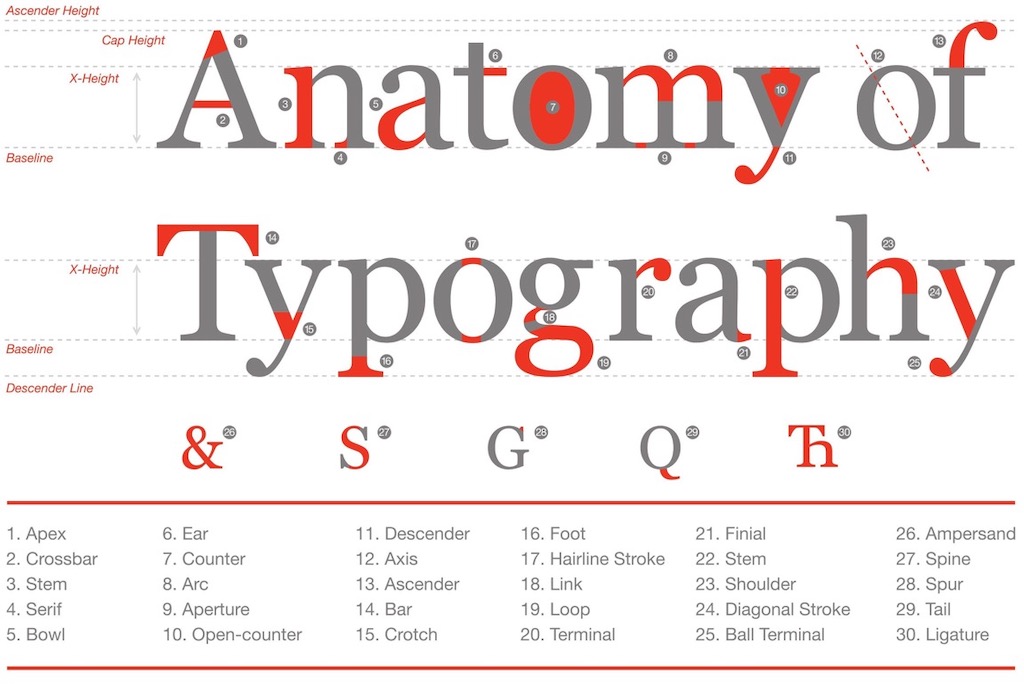
Secondly, a sans-serif is a letterform which does not have an extended form, the ‘serif‘, at the end of the strokes. The ‘serif‘ is a short line or stroke attached to or extending from the open ends of a letterform.
Writing down each number in a sequence starting with ‘one’, what is the first number to use a ‘b’? Answer – billion. The is a great example of the idea to “think before putting pen to paper”.
What was the meaning of ‘D’ in D-Day? Answer – It is not perfectly clear, but it would appear the army talks of H for hour and D for day. So D-Day meant just that, it was a code designation, and the D did not mean Doomsday, Decision or Debarkation. However it has been written that it could have meant ‘Departed Date’ and shortened to D-Day. This sounds credible since every debarkation in the Pacific, North Africa, and in Italy, was called D-Day.
Why is a G just a C with a bar at the bottom? Answer – It would appear that both C and G had their origin in the Phoenician letter ‘gimel‘.
But, ca. 300 BC, as the sounds and letters evolved into early Latin, the ‘C‘ was retained for one sound, and ‘G‘ for another. Later G became the equivalent of gamma, and C the equivalent of kappa. As the Roman alphabet was introduced into Britain, some early words with a ‘c’ took on a ‘k’, whilst others retained the ‘c’, and over time G a C took on different sounds. I have not found an explicit mention of the bar on the G. However it looks as if the C actually started its ‘mutation’ into G by acquiring a tail, but I think with the arrival of the printing press letter capitals stopped dropping below the baseline. Just guessing, G acquired a short stem topped with one or two ‘serifs‘, and it was these ‘serifs‘ that gradually became the bar.
How many letters start words in English with doubles? Answer – Four, a (aardvark), e (eel), o (ooze), and l (llama), the one letter that does it most frequently is ‘o’.
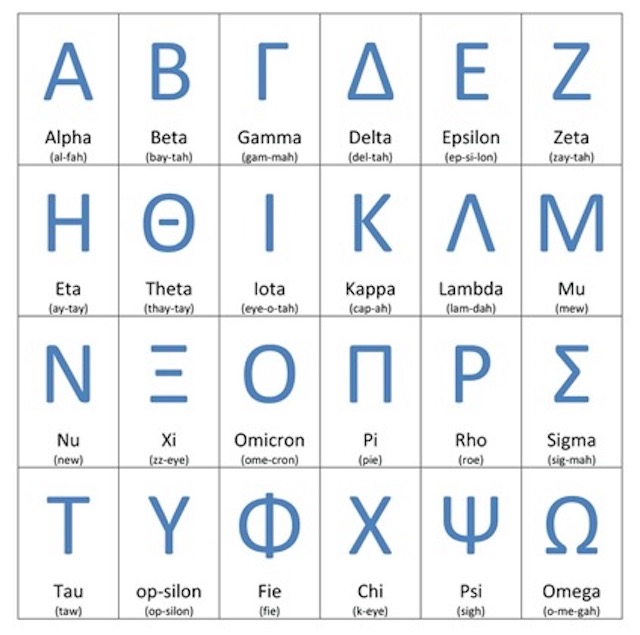
What is the last letter in the Greek alphabet? Answer – As you can see it’s omega and not zeta, and we often use the expression “from alpha to omega” to mean that every possibility has been covered.
In linguistics, which adjective describes languages in which grammatical structure is expressed largely by inflections rather than word order? In more general speech, it describes manmade substances that imitate natural products. Answer – A synthetic language uses inflections to express syntactic relationships.
In orthography, what Greek derived term denotes a combination of two letters representing a single sound? An example is the ‘ch’ in the phrase “Chattanooga Choo Choo“. Answer – Digraph (not diphthong which is a double sound).
Meaning insincere or pretentious talk, what word derives from the slang name for an 18th century theatrical device or gag employed to draw applause from the audience? Answer – Claptrap is the use of rhetorical devices to invite audience applause.
The idea is to have a conversation with the audience where they make a gross display of approval (applause, cheering) or disapproval (booing). The most obvious example is in introducing a speaker you only reveal the person’s name at the end, inviting the audience to show their appreciation. There are quite a number of basic techniques such as creating a contrast (was-will be and wait for applause), listing (1-2-3 and wait for applause), puzzle-solution, headline-punchline, position taking (problem-solution and wait for applause), etc. Key elements are delivery (gestures, gaze, facial expression, tone), content (usually praise your work and critique others), us-against-them, asking for support-agreement, building on audience response, exploiting the desire to be an individual or to be a member of a clan, etc.
The word ‘claptrap’ was first recorded in 1727 to mean “a trap to catch a clap by way of applause from the spectators at a play“, but came to mean pretentious, insincere, or empty language.
Also used to describe illicitly distilled liquor, which term has a longer history as a description of romantic piffle, the word possibly derived from the illusory images produced upon the surface of water at night? Answer – Moonshine initially meant illusory or literally “anything seen by the light of the Moon“. In Scotland it meant “clear, unaged whiskey” made with barley. But later in the US it was used for any illicit liquor, and I guess it just meant illicit distilling “by the light of the Moon“.
Although there is the suggestion that it derives from ‘moonrakers’ a name for English brandy smugglers. The word moonshine was already used in 15th century poetry to mean “appearance without substance“, and the reference to illegally produced spirits only emerged in the 18th century. The expression became famous in the US during the prohibition period 1920 to 1933, and moonshine remained illegal until 2010. Moonraker remained a nickname for the rural English country of Wiltshire, but it derived from the brandy smuggling along secret routes through Wiltshire. The locals would put the barrels in ponds to hide them from revenue men or customers officials. They would then rake up the barrels at night, but if caught that would play dumb and say they were trying to rake up the wheel of cheese.
Which synonym for empty drivel is a figurative use of a term dating probably from the 15th century and used originally to describe the swill from a brewery usually fed to pigs? Answer – Frankly I was not sure what the real answer was. I started with balderdash which appears to date from the time of Shakespeare and meant a froth or frothy liquid, or a jumbled mixture of liquids, such as milk and beer, or beer and wine. Only in the 17th century it came to mean senseless jumble or nonsense. But I could not find a reference to it being an animal feed. Swill is defined as a semi-liquid food from animals composed of edible refuse mixed with water or skimmed or sour milk. Then I hit on hogwash, which means balderdash or nonsense, however Wikipedia also tells us its pig swill.
I found one description that hogwash first appeared around 1440, and by 1712 it had become a synonym for cheap liquor and any other worthless thing. By 1773 it also meant poorly written manuscripts. In the late 1800’s journalists used hogwash for worthless writing in newspapers, and it also means fraudulent arguments or specious proclamations. It was said that hog referred to pigs. I had initially thought that the hog might relate to hogshead, a type of large barrel used for storing ale and wine. They do wash the barrels for reuse and there are lees which I though might be fed to animals. And pigs are often fed the spent’s grain from breweries. But the link between hogwash and pig food seems convincing.
Another source pointed out that live hogs were often carried in the lower decks of steamboats, etc. as food (along with other animals). And because of the smell they would be washed. Wealthy passengers would eat in the upper deck dinning room and this resulted in the expression “eating high on the hog“.
And finally the question no one asks, “Which language is the richest in the world?“
Answer – This article “Which language is the richest in the world?” quite rightly tells us that firstly, it is impossible to say, and secondly, it does not matter. Even just counting words in a dictionary is not as easy as it seems, see List of Dictionaries by Number of Words. And to answer another question you did not ask – there are/were 15,422,745 uniquely different words in the dictionaries of the 123 most used languages in the world.
